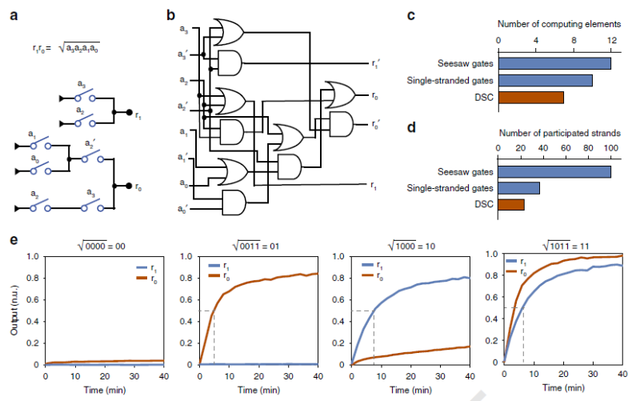Recently, Fan Chunhai’s team from SJTU SCCE(School of Chemistry and Chemical Engineering)developed switching circuits based on DNA strand displacement reactions (SDRs) for implementing digital computing. The research paper entitled “Implementing digital computing with DNA-based switching circuits” is published on the journal Nature Communications (https://www.nature.com/articles/s41467-019-13980-y). Wang Fei and Lv Hui are co-first authors. Fan Chunhai and Wang Lihua from SARI (Shanghai Advanced Research Institute) and SINAP (Shanghai Institute of Applied Physics) of CAS (Chinese Academy of Science) are co-corresponding authors.

DNA switching circuits, as a new way of implementing DNA computing, have laid the foundation for developing molecular computers and nanomachines with synthetic decision-making ability or collective behaviors.

Abstract
DNA strand displacement reactions (SDRs) provide a set of intelligent toolboxes for developing molecular computation. Whereas SDR-based logic gate circuits have achieved a high level of complexity, the scale-up for practical achievable computational tasks remains a hurdle. Switching circuits that were originally proposed by Shannon in 1938 and nowadays widely used in telecommunication represent an alternative and efficient means to realize fast-speed and high-bandwidth communication. Here we develop SDR-based DNA switching circuits (DSCs) for implementing digital computing. Using a routing strategy on a programmable DNA switch canvas, we show that arbitrary Boolean functions can be represented by DSCs and implemented with molecular switches with high computing speed. We further demonstrate the implementation of full-adder and square-rooting functions using DSCs, which only uses down to 1/4 DNA strands as compared with a dual-rail logic expression-based design. We expect that DSCs provide a design paradigm for digital computation with biomolecules.
Translated by Fan Chunhai Translated by Wang Bingyu

